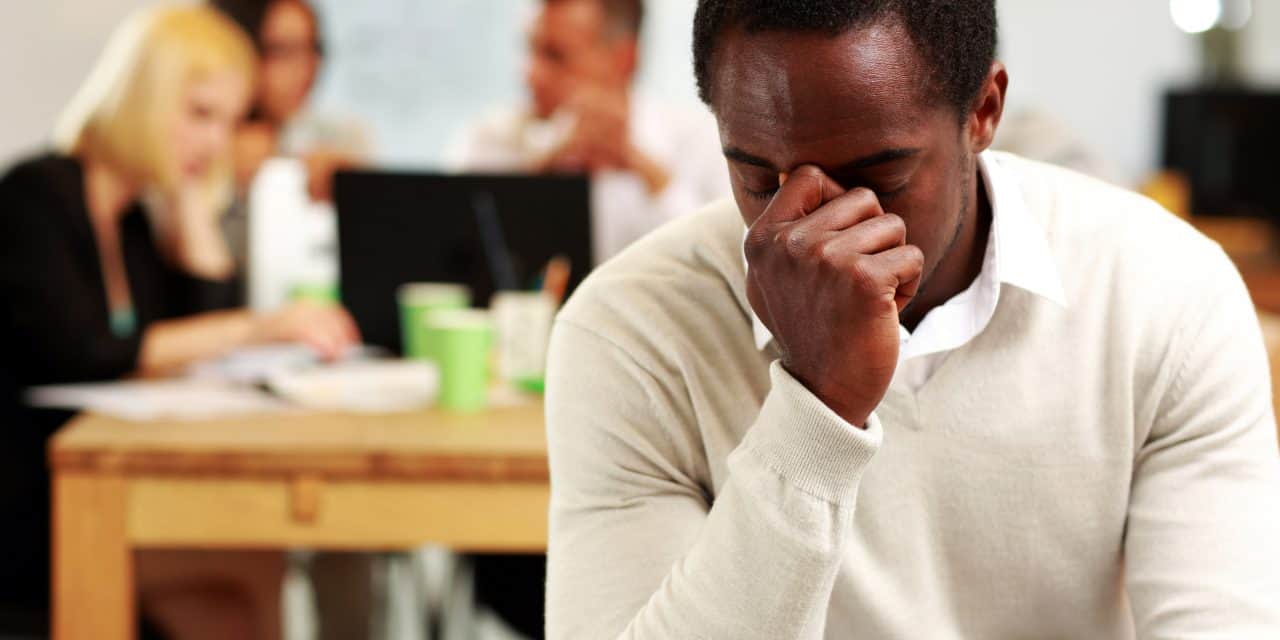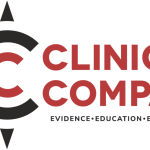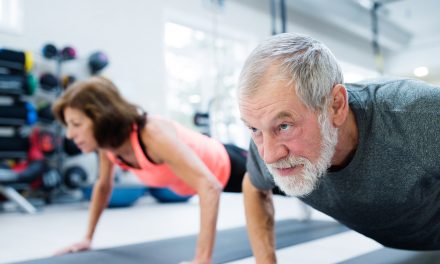
Concussions: Managing Patients After a Head Injury

When most hear the word concussion, they think about bigger-than-life professional athletes, flying around a field or a rink at what seems superhuman speeds, and colliding with another superhuman at a force that can only be compared with two Mack trucks. However, for those of you like me, who regularly attend to patients who suffer from post-concussion syndrome, the word “concussion” has a different meaning. When I hear the word “concussion,” I think about my neighbor’s 13-year-old daughter who was out of school for two years after a concussion during a soccer game. I think about my best friend’s 80-year-old mother who fell down the steps and hit her head, and ever since has been struggling with memory problems. I think about the family around the block who were in a bad car accident in which they all suffered concussions. I think about myself, my family, and everyone, and accept the fact that we are all one significant head injury away from losing our current lifestyle and routine.
While these are not the thoughts I typically have or enjoy, it’s hard not to have them when over the past eight years the majority of the patients in my clinic are patients with post-concussion syndrome. Brain injuries significantly impact families, which in turn impacts our communities, and ultimately has a negative impact on our society. There is a vigorous attempt by many disciplines to understand and learn as much as we can about concussions, and every day we are better educated. However, we are still a long way having a perfect way to diagnose a concussion, a perfect way to treat a concussion, and the perfect way to deal with concussions and sports. Today I wanted to discuss with you the current research and evidence on what a concussion is, and what are some of the best ways to manage a concussion. The search for better ways to diagnose and treat concussions is far from over; however, there are many evidence-based ways currently to manage your patients after a head injury.
So, what is a concussion? A concussion is an individualized injury that presents with a variety of cognitive, physical, emotional, somatic, and sleep-related symptoms and impairments that should require a multimodal approach to assessment and management (1). Those who suffer from a concussion rapidly develop short-term impairment of neurologic function. Among those, 80 to 90% resolve spontaneously within the first ten days, although the recovery timeframe may be longer in children and adolescents than in adults. However, 10 to 20% of patients experience prolonged, physical, behavioral, neuropsychological, and/or personality changes known as post-concussive syndrome (PCS) (2).
In American sports it is estimated up to 4 million concussions occur annually; however, this number is thought to be vastly underestimated, due to underreporting. Sports are second to motor vehicle crashes as the leading causes of traumatic brain injuries among people aged 15 to 24 years (3). The rate of concussion has been increasing steadily over the past two decades. This trend is likely due to improvement in the detection of concussion, but also reflects an increase in the true number of concussive impacts occurring. As athletes are getting bigger, stronger, and faster, it is logical that the forces associated with their collisions would also increase in magnitude. Something of concern, within a given sport, is that females tend to report higher rates of concussion than males. The evidence also indicates that, in general, concussions result in cognitive impairment in females more frequently than in males (4).
Concussions are thought to involve two different injuries: a primary mechanical injury and a secondary metabolic injury. The primary injury is the event that caused the mechanical damage to the brain cells as a result of shearing, tearing, and/or stretching. The secondary injury evolves over minutes to days to sometimes months after the initial traumatic event. The secondary injury results from delayed biochemical, metabolic, and cellular changes that are initiated by the primary injury (5).
The primary injury occurs as a result of combined linear and rotational accelerations to the brain (6). Many different head motions can occur from a concussion. This complex variety of responses makes each concussion unique. Brain tissue, compared to other biological tissue, deforms more easily in response to shear forces. Rapid head rotations generate shear forces throughout the brain causing tissue damage. Therefore, injuries producing rapid head rotations, even without a direct impact to the head, can cause a brain injury. In fact, if the head motion is constrained to exclude any rotational motion, it is difficult to produce traumatic unconsciousness (7).
The secondary injury results as a consequence of the external forces impact on the brain. This impact creates stretching and disrupting of neuronal and axonal cell membranes, while cell bodies and myelin sheaths are less affected. These membrane defects cause a deregulated flux of ions, including an efflux of potassium and influx of calcium. These events result in an enhanced release of excitatory neurotransmitters, particularly glutamate. Binding glutamate to N-methyl-D-aspartate (NMDA) receptors results in further depolarization (excitation), influx of calcium ions, and widespread suppression of neurons with glucose hypometabolism. Increased activity in membrane pumps (to restore ionic balance) raises glucose consumption, depletes energy stores, causes calcium influx into mitochondria, and impairs oxidative metabolism and consequently anaerobic glycolysis with lactate production, which might cause acidosis and edema (8).
What does that all mean? It means you have a brain which has less blood, less fuel, less energy, and is working harder than normal to try to restore balance. Over time if this process does not correct itself it will lead to the death of brain cells, as you see in chronic traumatic encephalopathy (CTE) (9). This process of the secondary injury is thought to account for many of the neurological deficits observed after TBI. As a consequence, many treatments for post-concussion focus on targeting this metabolic cascade.
So, what do you do when you suspect a concussion? Concussions should be diagnosed as soon as possible, because early recognition is associated with better health outcomes for patients (10). A few common symptoms of a concussion are headaches, brain fog, irritability or loss of emotion, loss of consciousness, balance problems, gait difficulties, slowed reaction time, drowsiness, and nausea. All red flag problems should be ruled out immediately, and advanced imaging should be ordered if deemed necessary. A neurologic examination and musculoskeletal examination of the cervical spine is required. Depending on the circumstances of the patient encounter (ex. acute vs. chronic, severity of neck injury) will determine the extent of examination you can safely perform.
How can you diagnose a concussion? Neuropsychological testing, brain imaging, and blood testing are all diagnostic techniques that currently have limited value as stand-alone tools for concussion. Although popular in health care, traditional neuropsychological testing should not be used on its own to make the diagnosis of a concussion.
In patients with persistent visual and vestibular symptoms, evaluation should include a thorough neurologic examination that emphasizes vision, vestibular, balance, coordination, and hearing. Nearly 40% of athletes who are concussed suffer from balance problems, while up to 30% suffer visual problems. Balance testing is used after a concussion, as there is an association between early balance deficits after TBI and late functional recovery (18). Problems with eye-movement control can result in blurred vision, double vision, impaired eye movements, difficulty reading, dizziness, headaches, pain behind the eyes, and poor visual attention1.
Up to 90% of people with concussion suffer at least one eye movement disorder. The most common eye movement disorder is one of convergence, which gives people the most symptoms while they are trying to look at something close, such as their cell phones (19). These eye movement impairments are under subconscious control, making them ideal markers to use for diagnosis, because they cannot be faked (20). In fact, MRI studies showed decreased activation of the brain stem correlating with eye movement disorders in patients with post-concussion syndrome (21). A number of eye movements should be examined, such as volitional saccades, pursuits, eccentric ocular gaze holding, anti-saccades, reflexive saccades, memorized-saccades, the vestibulo-ocular reflex (VOR), and VOR cancellation. If symptoms of benign paroxysmal positional vertigo (BPPV) are present, the Dix-Hallpike Maneuver should be used for assessment (22). This is important, as it is actually quite common to have multiple canal BPPV after head trauma (23). An evaluation that employs measures of concussion-related symptoms, neurocognitive functioning, eye-movement control, and postural control, remains the most sensitive to injury in excess of 90% from which to base the diagnosis of concussion (24).
After a concussion, a cervical spine evaluation must be performed, as the upper cervical spine is particularly vulnerable to trauma. The upper neck is the most mobile part of the vertebral column, and it contains a complex and rich proprioceptive system that has connections to the vestibular and visual systems. Therefore, upper cervical spine injuries, such as whiplash injuries, can cause headaches and dizziness, the two most reported symptoms after a concussion. Headaches can be caused by injury to the cervical spine as well as injury to the brain (25). Dizziness and balance dysfunction may be due to dysfunction of the vestibular, proprioceptive, or central nervous system. Cervical vertigo or dizziness after a whiplash injury can mimic the symptoms of PCS. This may be due to mechanoreceptor dysfunction or posttraumatic vertebrobasilar circulatory insufficiency (26).
Tests for alar and transverse ligamentous instability should be performed, especially if the patient is presenting with bilateral upper extremity pain and paresthesias provoked by cervical flexion. Body on head movement that provokes symptoms over whole body rotation is thought to isolate cervical stimulation over vestibular stimulation and may be used as a screening. More recent tests include the smooth pursuit neck torsion test and the joint position error test. Head movement that provokes symptoms over whole body rotation is thought to isolate cervical stimulation over vestibular stimulation and may be used as a screening.
With regard to treatment of post-concussion syndrome, no two concussions are the same; consequently, no two treatment programs can be identical (2). Rest has long been considered “the best medicine” for concussions. However, there have been documented problems with rest as an approach to concussion management. When critically analyzed, the benefits of rest are largely assumed rather than evidence-based. In fact, being sedentary after an injury or illness is one of the most consistent risk factors for chronic disability. Inactivity can precipitate, exacerbate, and/or prolong recovery from many health conditions, including those most often comorbid with concussion such as vestibular disorders, depression, posttraumatic stress disorder, chronic fatigue, and pain disorders (26).
Repeat concussion is most likely to occur within days of the initial injury, and there is evidence that the brain may be especially vulnerable to a second injury if it occurs before recovery from the initial concussion. Returning to competitive sports within the first week following injury is associated with an elevated risk of repeat concussion, regardless of whether the athlete is symptomatic or asymptomatic. Premature voluntary exercise within the first week after concussion impairs recovery, while aerobic exercise performed 14 to 21 days after concussion improves cognitive performance. Vigorous exercise within the first 2 weeks following injury might delay recovery in some people, particularly those who are more seriously injured. Therefore, it is strongly recommended for patients to rest for the first 10 to 14 days. After this time period, it is recommended to withhold patients from activities with heightened head trauma exposure risk (e.g., athletes returning to contact sport and military service personnel returning to combat), but not physical activity, exercise, or cognitive exertion. Once the patient is completely recovered from the concussion, both subjectively and objectively, he/she may return to activities with heightened head trauma exposure if desired.
Patients who have persistent signs and symptoms four weeks after head injury benefit from active rehabilitation. Exercise influences multiple neurotransmitter systems and promotes neuroplasticity, neurogenesis, and angiogenesis. Because neuroplasticity is experience-dependent, cognitive and physical exercise may be especially useful for patients after a concussion. There is evidence that “enriched environments” and practice with specific tasks that activate the affected neural circuitry can facilitate reorganization and functional recovery from concussion (28). The goal of the rehabilitation is to create a specific rehabilitation environment for each individual patient that forces their nervous system to improve their functional limitations in conjunction with many musculoskeletal therapies.
With regard to functional limitations, most patients with post-concussion present with impaired balance, vestibulo-ocular dysfunction, aerobic intolerance, and memory deficits. Rehabilitation prescriptions must be customized to therapies specific to the patient’s deficits (29). For your patients whose symptoms do not improve by 3 months post injury, it is strongly recommended that these patients be referred for a more comprehensive evaluation in a clinic that specializes in concussion and brain injury (30). Referral to the appropriate provider is important, because patients who entered an appropriate rehabilitation program before 9 months post-injury showed better global functionality than patients who began later treatment. Multimodal rehabilitation incorporating neuromuscular rehabilitation, vestibular rehabilitation, oculomotor rehabilitation, and cognitive rehabilitation, has a positive impact on functional recovery after concussion. Significant improvement on motor function, cognitive abilities, and communication skills result from appropriate rehabilitation.
Manual physical therapy has been shown to be effective in patients with cervicogenic headache and cervicogenic dizziness (32). Treatment is geared toward addressing the cervical dysfunction. Physical mobilization can facilitate recovery from cervical soft tissue injury and vestibular disorders, which often co-occur with MTBI and contribute to persistent symptoms. Therapeutic exercises for cervical range of motion and manual therapy for segmental hypomobility can be utilized. Manual, mechanical, and self-cervical traction may help to improve ROM and alleviate symptoms of pain and dizziness. Deep cervical flexor isometric stabilization exercises and joint position error retraining are also modalities used to rehabilitate the cervical spine (27). A combination of manual therapy and exercise has been shown to be more effective than passive treatment modalities in individuals with neck pain (25). Proper strength and conditioning, especially focused on strengthening the muscles of the neck, is a suitable way to limit the forces experienced by the head (4). Overall neck strength was found to be a significant predictor of concussion. For every one-pound increase in neck strength, odds of concussion decreased by 5% (33).
Vestibular rehabilitation is a form of rehabilitation in which many chiropractic physicians are not trained. Since our clinic has incorporated our vestibular rehabilitation program, we have been able to help a large number of complex patients we were unable previously. Vestibular rehabilitation is effective for dizziness, balance, and vestibulo-ocular impairments in post-concussion syndrome. A significantly higher proportion of individuals who are treated with cervical spine physiotherapy and vestibular rehabilitation are medically cleared to return to sport within 8 weeks of initiating treatment. Improvements from vestibular rehabilitation do not depend on age, making it accessible for both children and adults. In post-concussion patients with dizziness and imbalance, exercise programs of gaze stabilization, dynamic visual acuity, static postural stability, dynamic postural stability, desensitization of head motion, and aerobic conditioning yield the best results in symptom resolution (34). Improvements can be seen in patients as soon as four weeks into therapy, and some patients may report improvements within a few sessions. A daily home exercise program that may include oculomotor, balance, and cervical spine exercises is given to most patients (32). Eye movement exercises can be given to improve both visual symptoms, as well improve postural stability (35-36).
I know this is a lot of information, but this is an exciting time to be in a field where the more we know, the more we can help people. As you can see, we are learning a lot about concussion, and there is a lot more for us to learn. Regarding treatments such as medication, supplements, nutrition, neurofeedback, hyperbaric oxygen, peripheral nerve stimulation, etc. the most recent concussion guidelines point to rehabilitation as supported by the best evidence (37). As a consequence, I have limited this article to rehabilitation. However, I hope in the future these other modalities continue to undergo high-quality research and prove their effectiveness so we can use them to further help our patients.
In conclusion, I now reflect on the past decade when I began learning about concussions. I remember reading research in 2009, which still has yet to become standard procedure in the clinical management of concussion. Continued education on proper diagnosis, treatment, and referrals for patients with concussions is needed now more than ever. A continued emphasis must be placed not only on acute concussion care but also post-concussion care. In 2019, sitting in a dark room for years waiting for symptoms to go away is not acceptable. While many hear the word “concussion” and think about millionaire professional athletes, I think about the single mom who can’t get back to work because of her debilitating symptoms from her post-concussion syndrome. Concussions many times derail an individual’s ability to strive toward his/her purpose in life. Every day when I see our patients’ recovery from their concussion symptoms and return to their normal lives, I am not just happy for them, but I am happy for all the people in their lives they will now be able to touch in their future. I never dreamed when I started my practice over thirty years ago that I would be in a position to help people the way I currently am. With this reality possible for all of us, how could we not love our profession and continue to learn as much as we can to help our communities?
References:
- A Brief Vestibular/Ocular Motor Screening (VOMS) Assessment to Evaluate Concussions. American Journal of Sports Medicine. 2014.
- Concussion (Mild Traumatic Brain Injury) and the Team Physician: A Consensus Statement. Medicine & Science in Sports & Exercise. 2011.
- Concussions Among United States High School and Collegiate Athletes. Journal of Athletic Training. 2007.
- The Epidemiology of Sport-Related Concussion. Clinical Sports Medicine. Jan 2011.
- Neuroprotection for Traumatic Brain Injury: Translational challenges and emerging therapeutic strategies. Trends in Pharmacological Science. 2010.
- Biomechanics of Concussion. Clinical Sports Medicine. 2011.
- Comprehensive Assessment and Management of Athletes with Sport Concussion. The International Journal of Sports Physical Therapy. 2012.
- The Neuropathology and Neurobiology of Traumatic Brain Injury. Neuron. 2012.
- Chronic Traumatic Encephalopathy in Athletes: Progressive Tauopathy After Repetitive Head Injury. Journal of Neuropathology & Experimental Neurology. 2009.
- Updated clinical practice guidelines for concussion/mild traumatic brain injury and persistent symptoms. Brain Injury. 2015.
- Advances in Neuropsychological Assessment of Sport-Related Concussion. British Journal of Sports Medicine. 2013.
- Consensus Statement on Concussion in Sport: The 3rd International Conference on Concussion in Sport Held in Zurich, November 2008. Journal of Athletic Training. 2009.
- Neuroimaging After Mild Traumatic Brain Injury: Review and Meta-analysis. NeuroImage: Clinical. 2014.
- Occurrence of Oculomotor Dysfunctions in Acquired Brain Injury: A Retrospective analysis. Optometry. 2007.
- A Systematic Review of the Biomarker S100B: Implications for sport-related concussion management. Journal of Athletic Training. 2014.
- Blood-based diagnostics of traumatic brain injuries. Expert Review of Molecular Diagnostics. 2011.
- Circulating Brain Derived Neurotrophic Factor (BDNF) Has Diagnostic and Prognostic Value in Traumatic Brain Injury. Journal of Neurotrauma. 2015.
- Objectively Assessing Balance Deficits After TBI: Role of Computerized Posturography. Journal of Rehabilitation Research & Development. 2007.
- Occurrence of Oculomotor Dysfunctions in Acquired Brain Injury: A Retrospective analysis. Optometry. 2007.
- Impaired Eye Movements in Post-Concussion Syndrome Indicate Suboptimal Brain Function Beyond the Influence of Depression, Malingering or Intellectual Ability. Brain. 2009.
- Deficits in the activation of human oculomotor nuclei in chronic traumatic brain injury. Fronteirs in Neurology. 2015.
- Updated clinical practice guidelines for concussion/mild traumatic brain injury and persistent symptoms. Brain Injury. 2015.
- Diagnosis of Single or Multiple Canal Benign Paroxysmal Positional Vertigo According to the Type of Nystagmus. International Journal of Otolaryngology. 2011.
- The Biomechanical Properties of Concussions in High School Football. Medicine & Science Sports Exercise. 2010.
- Cervicovestibular rehabilitation in sport-related concussion: a randomised controlled trial. British Journal of Sports Medicine. 2014.
- Rehabilitation of Concussion and Post-concussion Syndrome. Orthopaedic Surgery. 2012.
- Vestibular Rehabilitation Following Mild Traumatic Brain Injury. Neurorehabilitation. 2013.
- Is Rest After Concussion The Best Medicine? Journal of Head Trauma Rehabilitation. 2013.
- Rehabilitation strategies for prolonged recovery in pediatric and adolescent concussion. Pediatric Annals. 2012.
- Updated clinical practice guidelines for concussion/mild traumatic brain injury and persistent symptoms. Brain Injury. 2015.
- The sooner patients begin neurorehabilitation, the better their functional outcome. Brain Injury. 2013.
- Rehabilitation strategies for prolonged recovery in pediatric and adolescent concussion. Pediatric Annals. 2012.
- Neck Strength: A protective factor reducing risk for concussion in high school sports. The Journal of Primary Prevention. 2014.Cervicovestibular rehabilitation in sport-related concussion: a randomised controlled trial. British Journal of Sports Medicine. 2014.
- Vestibular Rehabilitation After Mild Traumatic Brain Injury with Vestibular Pathology. NeuroRehabilitation. 2011.
- Current and Emerging Rehabilitation for Concussion. Clinical Sports Medicine. 2015.
- Saccades Improve Postural Control: A Developmental Study in Normal Children. Plos One. 2013.
- Consensus statement on concussion in sport-the 5th international conference on concussion in sport held in Berlin. British Journal of Sports Medicine. 2016.
George Michalopoulos DC, DACNB,FABBIR, FABCDD, FABVR
Dr. George Michalopoulos has been in practice for 28 years in Addison and Wood Dale and strives to restore his patient’s health in the shortest period of time. He utilizes a multi-disciplinary approach including, brain-based rehabilitation, physical therapy, diet, and education of the patient’s existing problems.
Along with completing his post-graduate diplomate status at the prestigious Carrick Institute for Graduate Studies and becoming 1 of only 14 Chiropractic Neurologist in the State of Illinois and 1 of only 355 Chiropractic Neurologists in the United States, he is also Fellowship trained in Brain Injury and Rehabilitation and concentrates on complex neurologic injuries but mainly focuses on mTBI and protracted concussion rehabilitation.
Dr. George is Fellowship trained in Childhood Developmental disorder and is certified in electrodiagnosis studies including needle EMG, NCV, and SSEP. He is also certified in QEEG and neurofeedback treatment. He is the only triple board-certified Chiropractic Neurologist in Illinois.
Has been a co-author on over 13 case study publications in the journal of Frontiers Neurology. Born in Toronto, Ontario, Canada, he did his undergraduate studies in Queen’s University in Kingston, Ontario.
Dr. George still plays competitive hockey and is a die-hard Toronto Maple Leaf fan. He has dedicated much of his time and effort to educate industry and community in the care and prevention of low back, neck, work, and sports injuries along with treatment of complicated neurologic disorders. He has treated many professional athletes including numerous hockey players from the NHL, and is active in the charitable organization of the Chicago Blackhawks hockey club. Dr. George Michalopoulos is also a mentor of scholarship winners for the Keith Magnuson and Jack Fitzsimmons Chicago Blackhawk Scholarships.
Professional memberships and charity organizations include, a charter member of the International Association of Functional Neurology and Rehabilitation, Member of the Functional Neurology Society, Society for Pain and Practice Management, Multi-disciplinary Academy of Affiliated Medical Arts (M.A.A.M.A.), and Chicago Blackhawks Hockey Club Alumni Association.
Neurologic Wellness Institute (Wood Dale 630-766-1552 and Chicago 312-265-0919)















